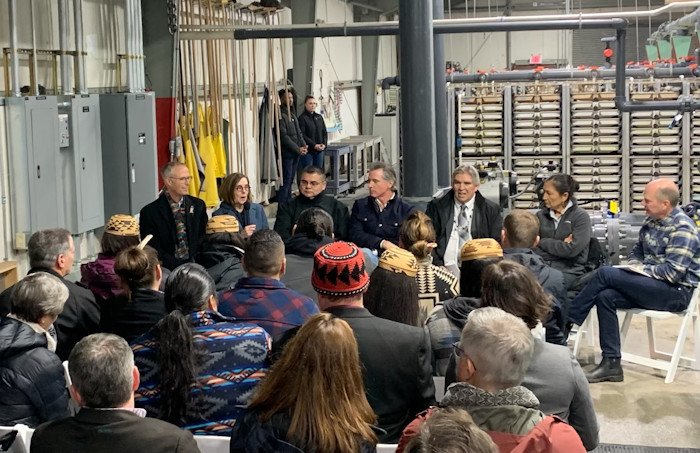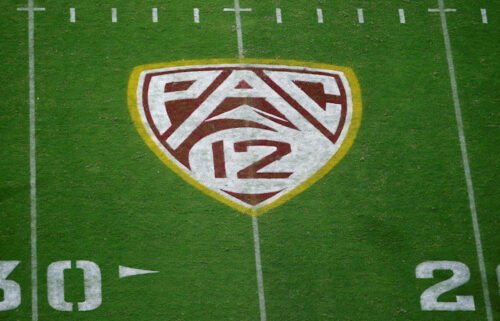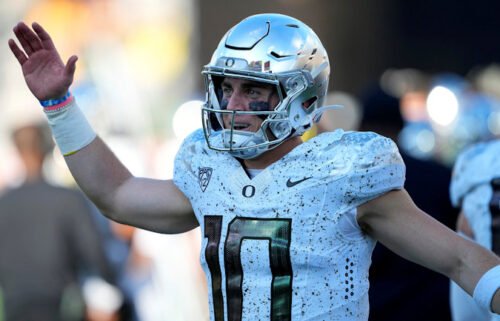Tribal, federal leaders cheer Klamath River dam removals

HORNBROOK, Calif. (AP) — Tribal, state and federal officials on Thursday cheered a plan for the largest dam removal in U.S. history along the Klamath River near the California-Oregon line as a major step toward restoring a once-thriving watershed that tribal communities have long relied on.
“Clean water, healthy forests and fertile land made the Klamath River Basin and its surrounding watershed a home to tribal communities, productive agriculture, and a place where abundant populations of migratory birds, suckers, salmon and other fish could thrive,” U.S. Interior Secretary Deb Haaland said. “We must take urgent and necessary action to protect this special place.”
Haaland joined leaders of the Karuk and Yurok tribes as well as U.S. Rep. Jared Huffman and Govs. Gavin Newsom of California and Kate Brown of Oregon along the river to celebrate the significance of the November decision to remove four dams along the river. Haaland also announced $5.8 million in new federal money to help restore aquatic ecosystems and habitats amid the West’s ongoing drought.
They spoke after touring a fish hatchery along part of the river in California, less than 10 miles (16 kilometers) south of the state line with Oregon.
The removal of four dams along the river will mark the largest dam demolition in U.S. history. Work is expected to begin next year and be completed by 2024. It will open up hundreds of miles of habitat for salmon, a fish that holds cultural and dietary significance for tribes. The river has been dammed for more than a century.
“This moment has truly been decades in the making,” Brown said. “For many of people here, today is truly a culmination of a lifetime of work to restore the helath water and fish stokes of the Klamath Basin.”
Tribal leaders spoke about the decades-long fight to remove the dams and restore the river’s ability to flow freely, allowing salmon and other species to thrive.
“Our children get to be able to walk the river banks post-dam removal,” said Chairman Joe James of the Yurok Tribe. “We’ll tell them about the history.”
The new federal money Haaland announced will go toward a study of the survival and migration rate of juvenile salmonid, an ecological flow assessment and project on the Trinity River in California and restoration of the Upper Williamson River in southern Oregon.



